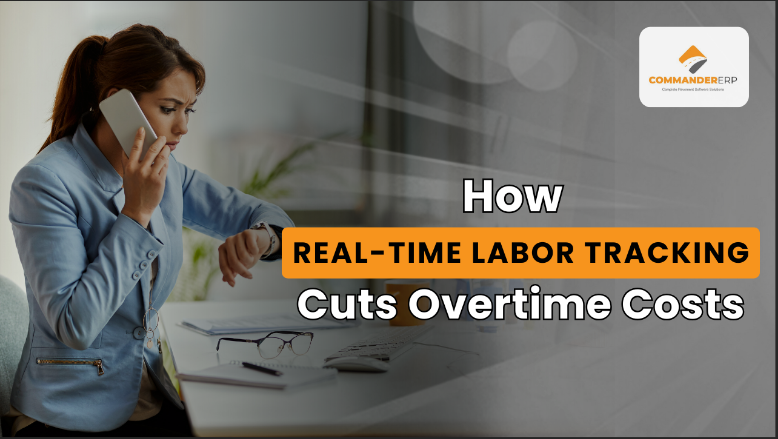
x
c
o
m
m
a
n
d
e
r
e
r
p
Blog
- Home
- Blog
- Commander ERP
- 2025-09-30
What is the primary goal of pavement management systems (PMS) in Commander ERP?
Why Pavement Management Still Struggles and Who Needs a Better Way
Managing pavements and road networks is one of the biggest challenges faced by construction companies, contractors, and infrastructure-focused organizations. Pavements are expensive to build, even more expensive to repair, and their condition directly impacts safety, business reputation, and customer satisfaction. The pain points are familiar:
- High costs of reactive maintenance when repairs are delayed until problems are too visible to ignore.
- Lack of reliable data for decision-making, leading to wasted budgets or missed opportunities.
- Difficulty prioritizing projects when resources are limited and multiple roads or sites demand attention.
- Pressure from clients, stakeholders, and the public to show accountability and measurable results.
The target audience for pavement management systems (PMS) includes contractors, civil engineering firms, government agencies, and private businesses that depend on well-maintained roads for logistics, safety, and service delivery.
These organizations know that reactive fixes are unsustainable. Instead, they need a system that allows them to plan proactively, spend wisely, and extend pavement life.
This is where Commander ERP comes into play. By integrating pavement business scores and project tracking into a single ecosystem, it ensures that decision-makers not only understand the condition of their pavement assets but also know the smartest way to act.
Understanding Pavement Management Systems (PMS) and Why They Matter for Smarter Infrastructure Decisions
At its core, a pavement management system is designed to bring order and logic to what can often feel like a chaotic process. Pavements deteriorate over time due to traffic, weather, and material fatigue. Without structured monitoring, companies are forced into costly emergency repairs that eat into margins and disrupt schedules.
A PMS provides a structured framework to:
- Collect condition data (surface distress, performance metrics, or scores).
- Analyze trends to predict future deterioration.
- Prioritize projects based on need, cost, and business impact.
- Plan interventions that extend pavement life at the lowest possible cost.
In infrastructure management, these decisions must be data-driven rather than based on guesswork or habit. With smart tools like Commander ERP, data is transformed into insights that help organizations make smarter calls whether that’s rescheduling maintenance, allocating budgets, or aligning pavement health with larger business goals.
The Primary Goal of Pavement Management Systems (PMS) – Balancing Performance, Maintenance, and Cost Efficiency
The main purpose of any PMS is clear: to optimize resources while maintaining pavement in the best possible condition. But in practice, this goal translates into three interrelated objectives:
- Performance: Ensuring that pavements remain safe, functional, and reliable for users.
- Maintenance: Scheduling timely and proactive interventions to prevent minor problems from escalating.
- Cost Efficiency: Allocating funds in a way that reduces long-term expenses rather than simply fixing issues in the short term.
Without a PMS, organizations risk spending more money for worse outcomes. For example, resurfacing a road at the right time can cost a fraction of what full reconstruction would demand later. By focusing on balance between immediate needs and future savings a PMS aligns technical requirements with financial realities.In Commander ERP, this balance is supported by features like pavement business scores, which give decision-makers a clear snapshot of asset condition, and reporting modules that ensure investments are justified with measurable data.
How Commander ERP Supports Pavement Management by Turning Data into Actionable Business Insights
Data is only valuable when it leads to action. Many organizations gather pavement condition information but fail to translate it into decisions that improve efficiency. Commander ERP closes this gap.
Here’s how:
- Pavement Business Score: Offers a straightforward metric that simplifies complex data into a format managers and executives can understand at a glance.
- Projects and Task Scheduling: Allows teams to align pavement priorities with broader business operations, ensuring maintenance doesn’t disrupt other commitments.
- Company Performance Reporting: Connects pavement condition to overall financial and operational outcomes, proving the value of timely action.
By integrating pavement management into the wider ERP ecosystem, Commander ERP ensures that pavement decisions are not made in isolation but as part of the larger business strategy. This reduces silos, improves accountability, and ensures that maintenance plans are not only technically sound but also financially viable.
Business Benefits of Using Pavement Management Systems (PMS) for Long-Term Road Performance and Resource Savings
Organizations that adopt PMS through Commander ERP quickly see tangible benefits that go beyond just smoother roads. Among the most significant are:
- Extended Pavement Life: Proactive interventions keep assets functioning longer, reducing the frequency of expensive rebuilds.
- Cost Savings: Resources are allocated where they deliver the highest return, avoiding wasteful spending.
- Improved Safety and Reliability: Well-maintained pavements reduce liability risks and enhance trust among clients and the public.
- Transparent Decision-Making: Backed by data, managers can justify choices to stakeholders with confidence.
- Efficiency in Operations: When projects are planned in sync with overall company performance, downtime is minimized, and productivity is maximized.
For businesses, this translates into both financial resilience and competitive advantage. Clients prefer working with contractors and service providers who can deliver quality infrastructure efficiently and transparently.
Achieving Stronger Pavement Outcomes with Commander ERP and Smarter Decision-Making Tools
At the end of the day, the primary goal of a pavement management system is simple: maximize pavement performance while minimizing costs. What sets Commander ERP apart is its ability to embed this goal into the day-to-day reality of a business. Instead of operating as a separate system, PMS becomes part of the broader ERP framework connected to projects, performance reports, schedules, and company-wide priorities.
For decision-makers, this means less guesswork, fewer crises, and more opportunities to take control of pavement outcomes before they become problems. For teams on the ground, it means clearer priorities, less wasted effort, and greater alignment with business goals. And for stakeholders, it means a clear demonstration that resources are being managed responsibly and strategically.
Conclusion: Building Sustainable Pavement Strategies with Commander ERP
The road to effective pavement management doesn’t start with guesswork or end with expensive fixes. It begins with understanding the true goal of PMS: balancing performance, maintenance, and cost efficiency for long-term sustainability.
By adopting Commander ERP, organizations gain a partner that not only measures pavement condition but also integrates that knowledge into actionable strategies. With the right tools in place, the pain points of high costs, poor data, and reactive management can finally give way to a smarter, more sustainable approach.
Better data. Better planning. Better pavements. That’s the promise of pavement management with Commander ERP.

inCommanderERP.png)

